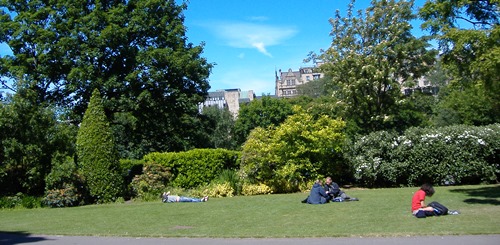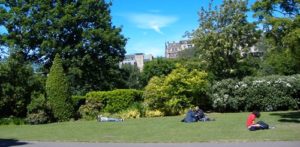Urban cooling with small to medium-sized green spaces

With the cooling effects of large urban green spaces already well established, scientists are now looking at the benefits of small to medium-sized green areas in cities. Forest Research, the research agency of the Forestry Commission, have studied small and medium parks in London to determine the optimum size, distribution and composition of urban green spaces needed to achieve urban cooling.
Built up urban environments can be as much as 9°C warmer than the surrounding area with buildings, road traffic and human activities all contributing to the ‘urban heat island’ effect. Vegetation, especially trees, has a crucial role to play in lowering temperatures by providing shade, reflecting sunlight and by evaporation.
The work, published online in the journal Urban Forestry and Urban Greening, analyses data from eight London greenspaces with areas ranging from 0.2 to 12.1 ha. Very small green spaces with areas of less than 0.5 ha (slightly smaller than an average football pitch) did not affect the air temperatures of their surrounding areas; however as the area of green space increased the distance over which cooling was achieved increased linearly. Spaces with more tree canopy coverage increased the distance beyond the boundaries of the green space over which cooling was measureable, while the amount of cooling was more strongly linked to the amount of grass coverage present.
The researchers found that on windy nights it wasn’t possible to measure the cooling effects of the green spaces beyond their boundaries as there was too much turbulent mixing of the air; but on calm warm nights they estimate that a network of green spaces of around 3-5 hectares each situated 100-150 m apart would provide comprehensive cooling for a city with a climate and characteristics similar to London.
“This information could help urban planners to design environments that can lead to lower temperatures in cities” said Dr Kieron Doick who led the research, “Trees and areas of grass both have an important role to play in aiding the cooling of cities – trees mean that a cooling effect is felt further afield and areas of grass increase the amount of cooling so a mix of the two is ideal”.






